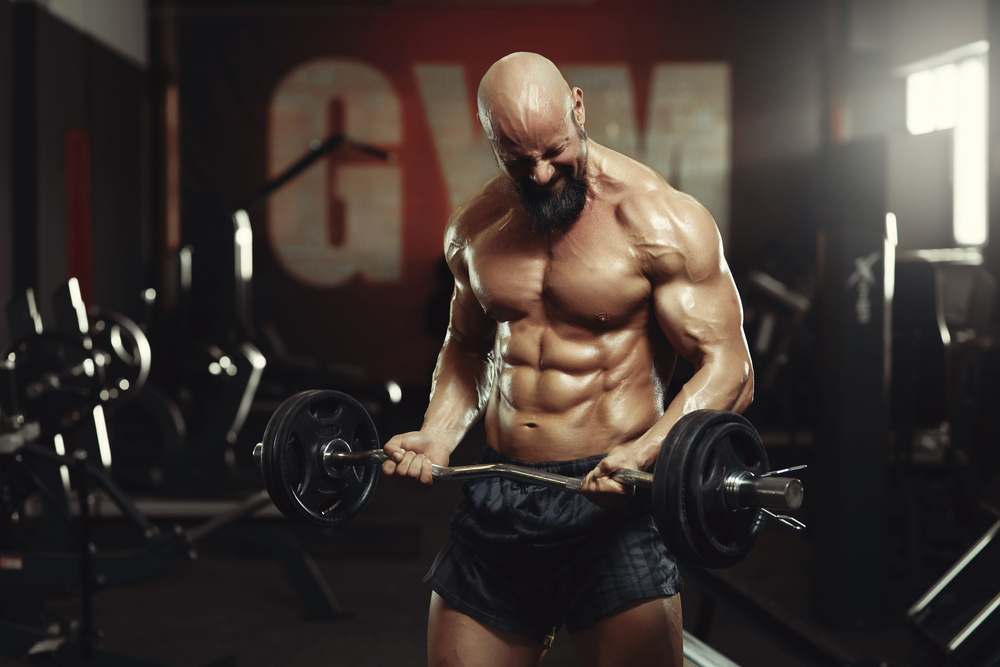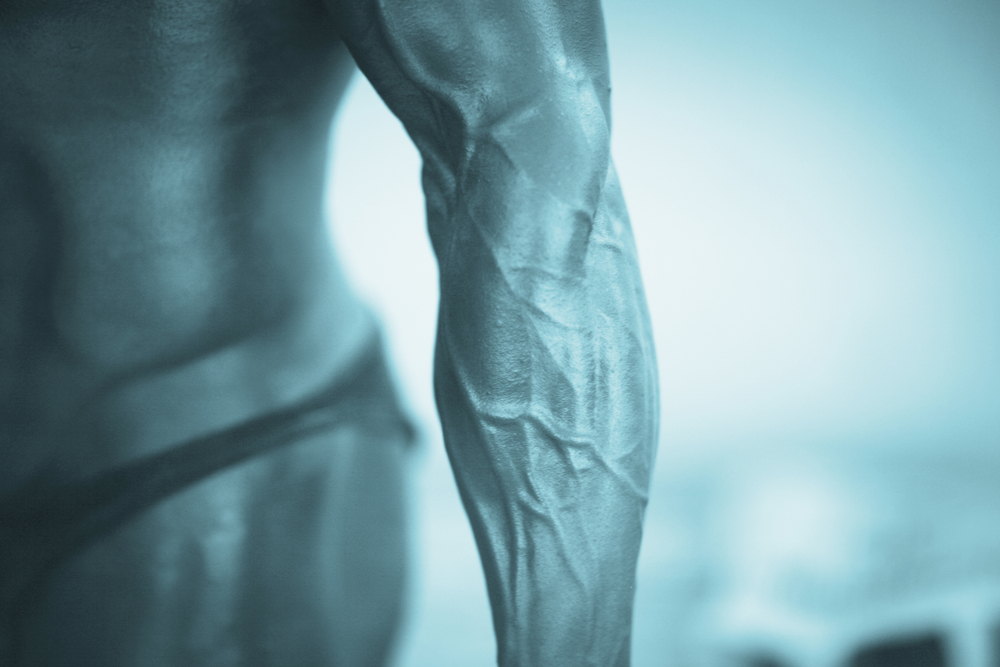EZ bar curls are an incredibly popular exercise that are known for building strong muscular arms.
While they’re obviously an effective bicep-building exercise, a common question asked is whether they work your forearms (and other muscles) too.
This is a very good question as EZ bar curls primarily target your biceps. But that doesn’t necessarily mean they’re the only muscles working throughout the movement.
In this article, we take a closer look at EZ bar curls to see if they work your forearms too.
We also look at why you might feel your forearms engage if they aren’t the main target muscles of the exercise.

Do EZ Bar Curls Work Your Forearms?
There’s a forearm muscle called the brachioradialis which is responsible for flexing the forearm at the elbow.
While your forearm technically doesn’t flex during EZ bar curls, the brachioradialis still plays a part in the movement.
Alongside the brachioradialis, other forearm muscles activate as they act as stabilizing muscles during EZ bar curls.
Anytime muscles activate, even a little bit, they’re being placed under stress and are therefore being worked.
With this in mind, you may argue that EZ bar curls do a good job of working your forearms.
On the other side of this though is to consider how much your forearms have to activate during EZ bar curls.
The answer is probably not enough to make any significant difference.
As your forearm muscles only act as stabilizing and secondary muscles, it’s likely that they won’t be activating as much as they’d need to, to increase in size and strength.
Using a supinated (palms-up) grip in standard EZ bar curls encourages forearm activation, but only to a small extent.
If you’re looking to build your forearms, there are better exercises out there than EZ bar curls.
How To Target Your Forearms More During EZ Bar Curls
One of the easiest ways to target your forearms more during EZ bar curls is by changing your grip to a pronated (palms-down) position and performing reverse EZ bar curls.
This overhand grip moves your brachioradialis from a secondary muscle to one of the primary muscles being worked.
Your biceps will still get a workout with reverse curls, but a lot more emphasis is placed on your forearms.
As a result, they get bigger, stronger, and more defined.
Considering a change in grip is a relatively small change, it actually makes a huge difference to the muscles being worked.

Do Reverse EZ Bar Curls Work Your Forearms?
Yes!
Reverse EZ bar curls are a fantastic forearm-building exercise and are a great addition to any arm-building program.
Reasons Why You May Have Sore Forearms After EZ Bar Curls
EZ bar curls only require a slight activation from your forearms, so any soreness felt in the area might not be a result of the usual discomfort felt after a workout.
Tight Forearm Muscles
Your forearms might be holding some tightness or tension which can cause your brain to send pain signals to the area.
This tightness could be a result of a previous workout, an activity unrelated to exercise, or even an injury.
Any tightness in a muscle can quickly become uncomfortable or painful during exercise.
So rectifying it with some stretching or a sports massage can be very helpful.
Insufficient Warm-Up
If you don’t warm up properly prior to starting a hard workout, you could easily find yourself feeling pain in areas where you shouldn’t be feeling it.
A warm-up prepares your body for exercise by increasing blood flow to your muscles and it can help prevent injury, reduce muscle tension, and increase oxygen flow.
All of which are important during exercise.
Lifting Too Much Weight
As with all weight lifting exercises, the weight you’re trying to lift during EZ bar curls needs to be appropriate to your current fitness level and abilities.
Trying to lift too much can force other muscles into the movement if your biceps are unable to handle the load on their own.
If your biceps struggle with the weight, your forearms will likely activate to assist in the movement which can cause discomfort and soreness.
Injury
Any kind of pain or discomfort felt during or after an exercise (other than the expected feeling of muscle activation) could be a sign of an injury.
If you feel pain or soreness during or after EZ bar curls and you’re certain your technique is correct, you have sufficiently warmed up, and the weight you are trying to lift is appropriate, you may want to think about seeing a medical professional to rule out an injury as the cause.
Other Exercises That Work Your Forearms
Preacher Curls
Some people get sore forearms from preacher curls.
While this can be caused by poor form, it’s usually due to the fact your forearms work hard as stabilizing muscles during preacher curls.
Hammer Curls
Hammer curls are another good exercise for forearms.
Thanks to the change in grip (palms facing inwards), your biceps take a little less of the load which results in your forearms working harder.
Reverse Curls
Like reverse EZ curls, reverse grip curls work your forearms effectively.
The key with these is to squeeze your forearms at the top of the movement.
Chin-Ups
Your forearms work hard during chin-ups for wrist stability.
If you’re looking for an exercise for overall arm development, chin-ups are a great choice.
Wrist Curls
I love to include wrist curls at the end of my biceps workout when my forearms are already slightly fatigued.
A few sets of these and my forearms are on fire!
Sources
I’ve been in the fitness and strength training industry for nearly a decade. In that time, I’ve gained 30 pounds of muscle, written hundreds of articles, and reviewed dozens of fitness supplements. As for my educational background, I’m a currently studying for my Active IQ Level 3 Diploma in Personal Training.

